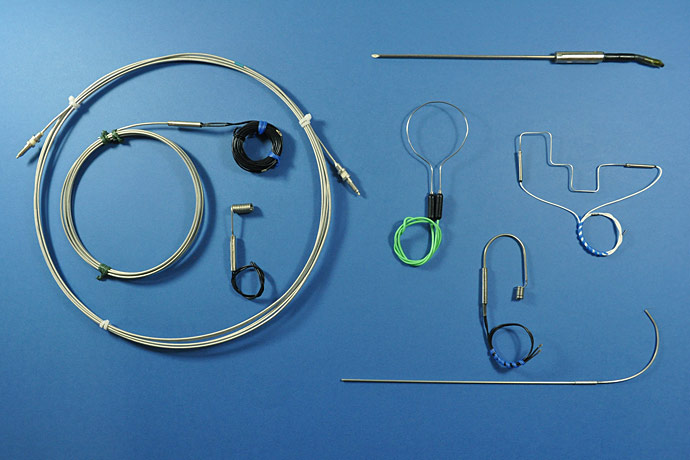The heating elements are screened electrical resistances of small diameter designed to be shaped and incorporated into heating systems from the simplest to the most sophisticated.
They consist of one or two straight current carrying cores in a flexible metal sheath, electrically insulated from one another and from the sheath by means of a highly compacted refractory powder. To cope with the problems of high heat density dissipation, a special cold-end construction has been developed.
Here the resistive core is extended at both ends by a different material of significantly lower resistance.
The outer sheath is continuous only the inner core construction changes. These ends can be fitted with connectors.
By combining small diameter and hard packed insulation, a heater made of such a cable can be given virtually any shape without deterioration of either its insulation or its sheath.
To improve the heat contact, and thus heat transfer, the cable can be deformed, brazed or welded into its optimum position.

